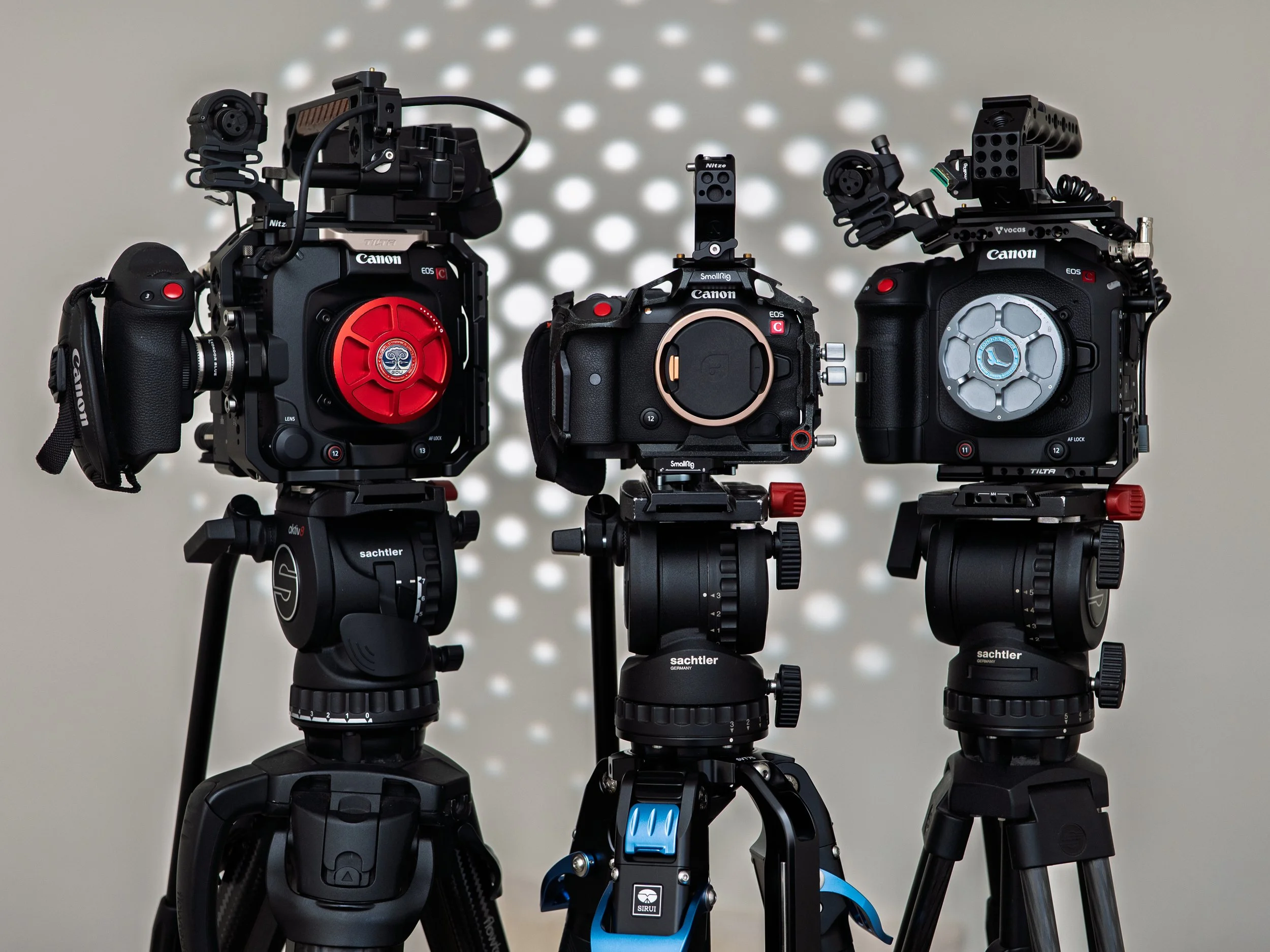Canon C400 vs C80: When I Use Each Camera on Set
My primary cameras for client work are the Canon C400 and the Canon C80 (let’s ignore my Canon R5C for now). What’s interesting about these two cameras is that they actually share the same sensor and low-light performance, which means the image quality is basically the same across the both of them. But it’s how those sensors are packaged, and how the cameras are designed to operate, that determines when I reach for one over the other.
The Canon C400: Built for Expanded Setups
The C400 is built for larger productions. With pro-grade I/O and a larger more modular body design, it’s designed to be your A-camera on a crewed set. It also supports slow-motion RAW recording, which gives it an edge for more cinematic sequences when you need that bit of extra flexibility in post.
Another key advantage: the C400 is actually comfortable to rig on my shoulder. Its body is balanced for traditional ENG and documentary-style handheld work, something the C80 can’t quite match. While the C80 is great on a gimbal or tripod, it’s not designed for true shoulder-mounted shooting. The C400, with the right rig, feels built for it.
It’s the camera I bring when:
I need full connectivity with modularity
We’re running multiple monitors or working with a larger crew
The brief calls for the most flexible RAW options available
I need a comfortable shoulder-mount setup for roaming shots
Despite the shared sensor, the C400 is simply more robust and it’s designed for scenarios where you want maximum flexibility on set. The extra size and weight are part of that deal, and on jobs where the pace is slower and setup time is built in, I don’t mind the added bulk.
The Canon C80: Small Body, Big Capability
The C80, on the other hand, is all about speed, size, and simplicity. You’re still getting that excellent sensor and Canon’s colour science, but in a much more portable form factor. It’s lighter, runs longer on a battery, and is far easier to rig for gimbal or solo work.
I reach for the C80 when:
I’m self-shooting or working with a second op
I need to rig a gimbal for architecture or interiors
I want to stay discreet on documentary shoots
Setup time is minimal and I need to stay agile
It lacks some of the deeper I/O options, but in many cases that’s not a problem especially for fast-turnaround content, talking head interviews, or b-roll pickups. It also shares Canon’s reliable autofocus and familiar menus, which makes it ideal to use as a secondary camera alongside the C400.
Using Them Together
Because the sensor performance and colour profiles are nearly identical, the C400 and C80 cut together seamlessly in post. I often run the C400 as my locked-off A-cam and use the C80 as the B-cam setup, or send it off to get started on b-roll if the turn around for filming is tight.
That consistency means I’m not fighting in the grade later, and I can scale the production up or down based on the client’s needs, without worrying about matching footage across different systems.
Final Thoughts
Owning both cameras isn’t only about image quality it’s about workflow, size, and ergonomics. The C400 is my rig-ready, feature-rich workhorse, while the C80 is my grab-and-go problem-solver. Same look, different muscle.
If you want to see how both perform on real shoots, check out a recent example here.
